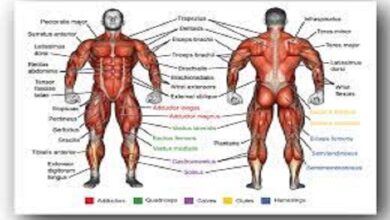Understanding Wry Neck: Causes, Symptoms, and Treatment Options

Introduction:
Have you ever experienced sudden neck pain or stiffness that makes it difficult to move your head? If so, you may have encountered a condition called wry neck. Wry neck, also known as torticollis, is a painful condition that affects the neck muscles, causing the head to tilt to one side. In this article, we will delve into the causes, symptoms, and treatment options for wry neck.
What is Wry Neck?
Wry neck is a condition characterized by involuntary muscle contractions in the neck, causing the head to twist or tilt to one side. The term “wry” refers to the twisted or distorted appearance of the neck. While wry neck can occur at any age, it is most commonly seen in infants and young children.
Causes of Wry Neck:
- Congenital Causes: Wry neck can be present at birth, known as congenital torticollis. It often occurs due to abnormal positioning of the head in the womb or injury to the muscles during childbirth. Congenital torticollis is usually noticed within the first few weeks of a baby’s life.
- Acquired Causes: Acquired wry neck can develop later in life and may be triggered by various factors, including:
a) Muscle Spasms: Sudden, involuntary muscle contractions in the neck can result from injury, trauma, or repetitive strain, leading to wry neck.
b) Neck Injuries: Whiplash injuries, sports-related injuries, or accidents that cause damage to the neck muscles or nerves can contribute to the development of wry neck.
c) Infections: Certain infections, such as ear infections or upper respiratory tract infections, can cause inflammation in the neck muscles, leading to wry neck.
d) Cervical Dystonia: This neurological condition causes involuntary muscle contractions and repetitive movements, leading to abnormal head and neck positions.
Symptoms of Wry Neck:
The most prominent symptom of wry neck is the abnormal positioning of the head, which may be tilted to one side or twisted. Other common symptoms include:
- Neck pain or stiffness
- Difficulty moving the head or neck
- Muscle spasms or jerking movements
- Headaches
- Tenderness or swelling in the neck area
Diagnosing Wry Neck:
If you suspect you have wry neck, it is essential to consult a healthcare professional for a proper diagnosis. The doctor will review your medical history, perform a physical examination, and may order diagnostic tests such as X-rays or magnetic resonance imaging (MRI) to rule out other underlying conditions.
Treatment Options:
-
Conservative Treatments:
- Rest: Taking a break from activities that worsen the symptoms can help alleviate pain and promote healing.
- Heat or Cold Therapy: Applying a warm compress or cold pack to the affected area can help reduce pain and muscle spasms.
- Pain Medications: Over-the-counter nonsteroidal anti-inflammatory drugs (NSAIDs) like ibuprofen can help relieve pain and reduce inflammation.
-
Physical Therapy:
- Stretching and Strengthening Exercises: A physical therapist can guide you through specific exercises to improve neck mobility and strengthen the neck muscles.
- Manual Therapy: Techniques like massage and manual manipulation can help relax the muscles and alleviate pain.
-
Botox Injections:
- In some cases, injecting botulinum toxin (Botox) into the affected muscles can help relax them and relieve muscle spasms.
- Surgery: Surgical intervention is rarely required for wry neck. However, if conservative treatments fail to provide relief, surgical options such as muscle lengthening or tendon transfer may be considered.
Coping with Wry Neck:
Living with wry neck can be challenging, but there are steps you can take to cope with the condition:
- Maintain good posture and ergonomics
- Practice relaxation techniques to reduce muscle tension
- Use supportive pillows and neck braces
- Seek support from a healthcare professional or support groups
Conclusion:
Wry neck, or torticollis, is a painful condition characterized by abnormal head positioning due to involuntary muscle contractions in the neck. While the condition can be distressing, various treatment options are available, ranging from conservative approaches like rest and physical therapy to more invasive measures like surgery. If you suspect you have wry neck, it is crucial to seek medical attention for an accurate diagnosis and appropriate treatment. With proper care and management, individuals with wry neck can find relief and regain their normal neck function.




